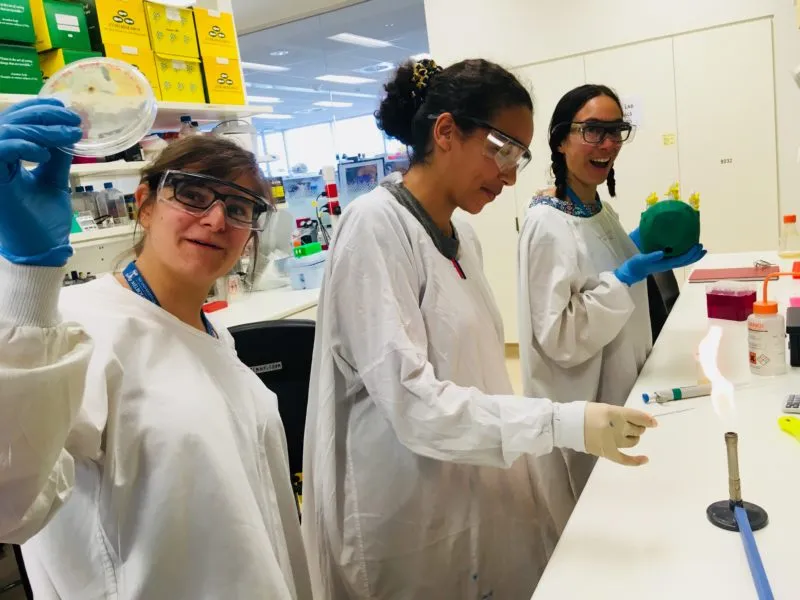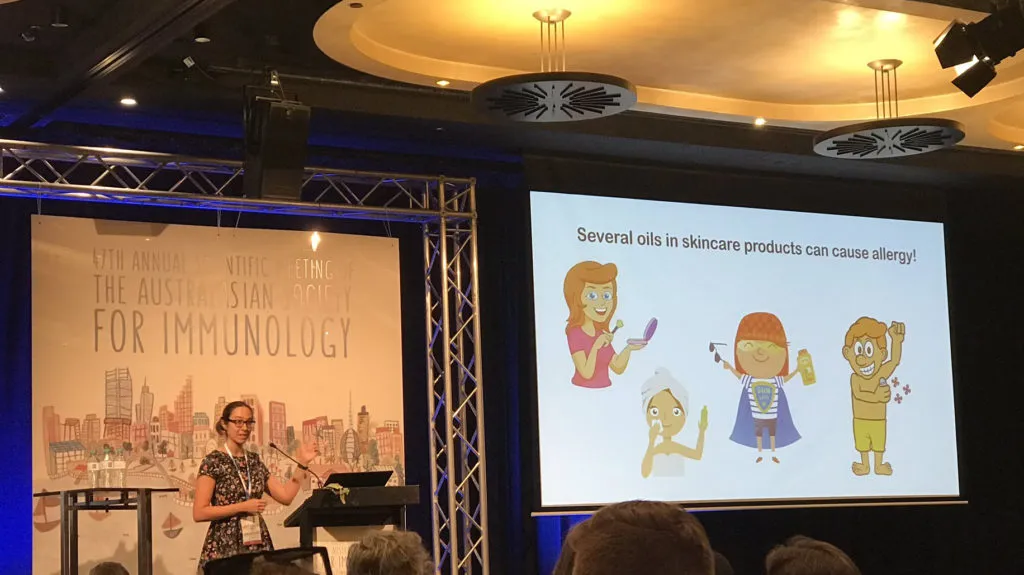The story of a budding science communicator – why I’m excited to share science

Late last year, I met Paul and Simon at the Royal Society of Victoria’s celebration for the 50th anniversary of Earthrise, following which, they invited me to be a part of the Scientell team. I’m budding science communicator as well as aspiring immunologist as a PhD student at the University of Melbourne.
It’s an exciting time to be a scientist – with abundant discoveries, rapid developments in technology, and speedy dissemination of information. We no longer have to go to the dusty stacks of libraries to read scientific journals, but instead have it all a click away thanks to the Worldwide Web, with online journals, mainstream media sites, and social media.
Scientists regularly have to communicate their work, whether it be to colleagues and potential collaborators, funding bodies, or the media and public. Academics focus on a niche field of scientific research, and I’ve heard academics who are doing incredible research at conferences, however, not all of them can effectively communicate their research to people outside their field. (I myself have attended interdisciplinary symposia and occasionally, while understanding that a presenter is brilliant and doing great work, I’ve not understood what their work actually entails.)
On the other side, a large problem with oversimplification of scientific information is that we can hear about a “new miracle cure” that in actual fact may be a long way off from clinical trial or “fearsome health risks” based on preliminary findings. It can be difficult at times to find the happy medium between simplifying science to be understood, but not to the point that it can be misunderstood and taken out of context.
Conveying science to peers and to the public requires very different languages. Uncertainty is often implicit in science with language such as “these results suggest…” or “supports the hypothesis that…”, and very rarely do you come across the word “prove”. Researchers are aware that experiments mostly provide only a snapshot of reality and results can be subject to interpretation. This can lead to misplaced hope or unnecessary alarm when research that shows promise in an animal model or that something could be potentially harmful is picked up by media, especially with media’s knack of inflating controversy. There are many downsides to misunderstandings that occur when scientific language isn’t translated into plain language as best it could, including mistrust of researchers and public health threats, as seen after the damage that one paper from the 1970s caused in its suggestion of a link between vaccination and autism (despite the numerous contrary studies since). With better communication of science, we can better inform the public about current research and how it affects their lives.
My first dabble into science communication was teaching as a tutor, an In2Science mentor for a year nine science class at Simonds’ Catholic College, and a science mentor at the Gene Technology Access Centre (where I guide students through laboratory experiments and case studies). Having now taught science to students from grades 5-12 plus undergraduate students, I’m used to communicating science to different audiences and creating analogies. I jumped onto the Twitter bandwagon at the Australasian Society for Immunology’s annual scientific conference in December 2017, at which I was a social media ambassador. I gave myself the challenge of summarising each presentation that I attended into one, engaging, plain-language tweet, and enjoyed the challenge so much that I began ‘tweeting’ at many different events. I received positive feedback from people overseas who were able to follow the conference, hear about innovative research in Australian immunology, and could join in the discussion on the other side of the world.

Presenting at ASI 2018 for the BD Science Communications Award. Photo credit: Dale Godfrey.
Not wanting to stop, the next month, I volunteered to write for the Convergence Science Network and Royal Society of Victoria as a “science communication officer”. Over the past year, I’ve written about subjects including Aboriginal astronomy, the neuroscience behind racism, rescue projects for endangered (or even extinct) species, and nanoparticles for drug delivery. That is the beauty of science communication: rather than committing to one, specific field, I’ve been exposed to a whole range of sciences, met many incredible people, and learned so much more than what I otherwise would have during my PhD.
I also appreciate seeing effective science communication inspire imagination. Science Gallery Melbourne is the prime example of a combination of science and art, with their previous Blood and Perfection exhibitions. I’ve also met artists in residence at research institutions who create beautiful and informative pictures inspired by scientific concepts and seen the 3D-printed models used by the Monash Biomedicine Discovery Institute to teach immunology to members of the visually impaired community, all of which are great leaps forward in creating alternate ways to share and teach science. A goal of mine is to share science through song – we’ll see how I go with that….
I very much enjoy communicating science and sharing stories in science to a wider audience – my friends can be my subjected audience when I get overly excited. It’s important for the wider society to understand and be aware of scientific progress, and in recent years the public has shown a greater appetite for science, leading to a greater demand for scientific jargon to be turned into something more digestible and engaging. As a PhD candidate rooted in academia and someone who enjoys telling stories, science communication is a balance of creativity, writing, and sharing science.
Author:
Date Posted:
February 19, 2019
